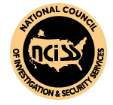Identity theft is when a person’s personal and financial information is used to open bank accounts, credit cards and other financial accounts in their name without their knowledge or permission. Identity theft can also include tax return fraud and health insurance claim fraud where an individual’s tax information or health insurance is used without their permission. An identity thief might also steal your information to sell to others who then use that information to steal your identity. Here’s how to recognize and protect against identity theft.
Signs of Identity Theft
Here are some common signs of identity theft.
1. You’re being billed for things you didn’t buy.
2. You’ve been unexpectedly turned down for a credit card or loan.
3. Your household bills stop coming in the mail.
4. Small “test charges” you didn’t make appear on your credit or bank statement.
5. Your tax return gets rejected by the IRS.
6. Your financial accounts show charges you don’t recognize.
Prevent Identity Theft
There are a number of ways to help protect yourself in the event you suspect identity theft or you feel your personal and financial information has been compromised.
1. Password protect your devices such as smartphones and tablets.
2. Never give out personal information over the phone or email.
3. Regularly check your credit reports.
4. Don’t leave mail sitting in your mailbox. Thieves steal mail to gain valuable details about your bills, accounts and identity.
5. Limit the number of credit cards you carry. The fewer cards you have on you, the fewer cards will be compromised if your wallet or purse is stolen.
6. Never carry your social security card on you or in your wallet. Keep it stored at home in a safe place.
7. Mix up your passwords so you use a unique password for each financial site or personal site you access. Use a password manager program to help you remember passwords as needed.
If You’ve Been Compromised
If you discover you have been compromised by an identity thief, you’ll want to move quickly to limit the damage and stop further fraud. Follow these steps to get started connecting with credit bureaus and reporting the fraud.
1. Review your credit report and notify all three credit bureaus about any fraudulent accounts or activities. Additionally, have them put a fraud alert or security freeze on your account to protect you from new accounts being opened in your name.
2. File identity theft reports with the Federal Trade Commission and the police.
3. Dispute all fraudulent activity.










